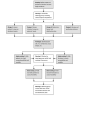Patients' and Providers' Needs and Preferences When Considering Fertility Preservation Before Cancer Treatment: Decision-Making Needs Assessment
- PMID: 34096871
- PMCID: PMC8218210
- DOI: 10.2196/25083
Patients' and Providers' Needs and Preferences When Considering Fertility Preservation Before Cancer Treatment: Decision-Making Needs Assessment
Abstract
Background: As cancer treatments continue to improve, it is increasingly important that women of reproductive age have an opportunity to decide whether they want to undergo fertility preservation treatments to try to protect their ability to have a child after cancer. Clinical practice guidelines recommend that providers offer fertility counseling to all young women with cancer; however, as few as 12% of women recall discussing fertility preservation. The long-term goal of this program is to develop an interactive web-based patient decision aid to improve awareness, access, knowledge, and decision making for all young women with cancer. The International Patient Decision Aid Standards collaboration recommends a formal decision-making needs assessment to inform and guide the design of understandable, meaningful, and usable patient decision aid interventions.
Objective: This study aims to assess providers' and survivors' fertility preservation decision-making experiences, unmet needs, and initial design preferences to inform the development of a web-based patient decision aid.
Methods: Semistructured interviews and an ad hoc focus group assessed current decision-making experiences, unmet needs, and recommendations for a patient decision aid. Two researchers coded and analyzed the transcripts using NVivo (QSR International). A stakeholder advisory panel guided the study and interpretation of results.
Results: A total of 51 participants participated in 46 interviews (18 providers and 28 survivors) and 1 ad hoc focus group (7 survivors). The primary themes included the importance of fertility decisions for survivorship, the existence of significant but potentially modifiable barriers to optimal decision making, and a strong support for developing a carefully designed patient decision aid website. Providers reported needing an intervention that could quickly raise awareness and facilitate timely referrals. Survivors reported needing understandable information and help with managing uncertainty, costs, and pressures. Design recommendations included providing tailored information (eg, by age and cancer type), optional interactive features, and multimedia delivery at multiple time points, preferably outside the consultation.
Conclusions: Decision making about fertility preservation is an important step in providing high-quality comprehensive cancer care and a priority for many survivors' optimal quality of life. Decision support interventions are needed to address gaps in care and help women quickly navigate toward an informed, values-congruent decision. Survivors and providers support developing a patient decision aid website to make information directly available to women outside of the consultation and to provide self-tailored content according to women's clinical characteristics and their information-seeking and deliberative styles.
Keywords: cancer; decision support techniques; fertility preservation; needs assessment; oncofertility; oncology; patient decision aids; patient needs; shared decision making.
©Aubri Hoffman, Laura Crocker, Aakrati Mathur, Deborah Holman, June Weston, Sukhkamal Campbell, Ashley Housten, Andrea Bradford, Shilpi Agrawala, Terri L Woodard. Originally published in JMIR Formative Research (https://formative.jmir.org), 07.06.2021.
Conflict of interest statement
Conflicts of Interest: None declared.
Figures
Similar articles
-
The Pathways fertility preservation decision aid website for women with cancer: development and field testing.J Cancer Surviv. 2018 Feb;12(1):101-114. doi: 10.1007/s11764-017-0649-5. Epub 2017 Oct 15. J Cancer Surviv. 2018. PMID: 29034438
-
Decision Making When Cancer Becomes Chronic: Needs Assessment for a Web-Based Medullary Thyroid Carcinoma Patient Decision Aid.JMIR Form Res. 2021 Jul 16;5(7):e27484. doi: 10.2196/27484. JMIR Form Res. 2021. PMID: 34269691 Free PMC article.
-
Developing a Web-Based Shared Decision-Making Tool for Fertility Preservation Among Reproductive-Age Women With Breast Cancer: An Action Research Approach.J Med Internet Res. 2021 Mar 17;23(3):e24926. doi: 10.2196/24926. J Med Internet Res. 2021. PMID: 33729164 Free PMC article.
-
What factors hinder the decision-making process for women with cancer and contemplating fertility preservation treatment?Hum Reprod Update. 2017 Jul 1;23(4):433-457. doi: 10.1093/humupd/dmx009. Hum Reprod Update. 2017. PMID: 28510760 Review.
-
Systematic review of fertility preservation patient decision aids for cancer patients.Psychooncology. 2019 Mar;28(3):459-467. doi: 10.1002/pon.4961. Epub 2018 Dec 27. Psychooncology. 2019. PMID: 30523651
Cited by
-
Fertility preservation in Malaysian pediatric cohort: a survey of healthcare providers' knowledge, practice, attitude, perceptions and barriers.Front Pediatr. 2024 Sep 19;12:1419515. doi: 10.3389/fped.2024.1419515. eCollection 2024. Front Pediatr. 2024. PMID: 39363970 Free PMC article.
-
Fertility Preservation Practices at Pediatric Oncology Institutions in the United States: A Report From the Children's Oncology Group.JCO Oncol Pract. 2023 Apr;19(4):e550-e558. doi: 10.1200/OP.22.00349. Epub 2023 Feb 10. JCO Oncol Pract. 2023. PMID: 36763922 Free PMC article.
-
Experiences of Female Childhood Cancer Patients and Survivors Regarding Information and Counselling on Gonadotoxicity Risk and Fertility Preservation at Diagnosis: A Systematic Review.Cancers (Basel). 2023 Mar 23;15(7):1946. doi: 10.3390/cancers15071946. Cancers (Basel). 2023. PMID: 37046607 Free PMC article. Review.
-
Fertility Information Perceptions and Needs of People with Cancer, Their Family Members, and Caregivers.Support Care Cancer. 2025 Aug 8;33(9):770. doi: 10.1007/s00520-025-09838-3. Support Care Cancer. 2025. PMID: 40781496
-
Evaluating the Acceptability and Feasibility of a Sexual Health-Focused Contraceptive Decision Aid for Diverse Young Adults: User-Centered Usability Study.JMIR Form Res. 2023 Oct 3;7:e44170. doi: 10.2196/44170. JMIR Form Res. 2023. PMID: 37788070 Free PMC article.
References
-
- Canada AL, Schover LR. The psychosocial impact of interrupted childbearing in long-term female cancer survivors. Psychooncology. 2012 Feb;21(2):134–43. doi: 10.1002/pon.1875. http://europepmc.org/abstract/MED/22271533 - DOI - PMC - PubMed
-
- Loren AW, Mangu PB, Beck LN, Brennan L, Magdalinski AJ, Partridge AH, Quinn G, Wallace WH, Oktay K. Fertility preservation for patients with cancer: American Society of Clinical Oncology Clinical Practice Guideline update. J Clin Oncol. 2013 Jul 01;31(19):2500–10. doi: 10.1200/jco.2013.49.2678. - DOI - PMC - PubMed
LinkOut - more resources
Full Text Sources
Research Materials



